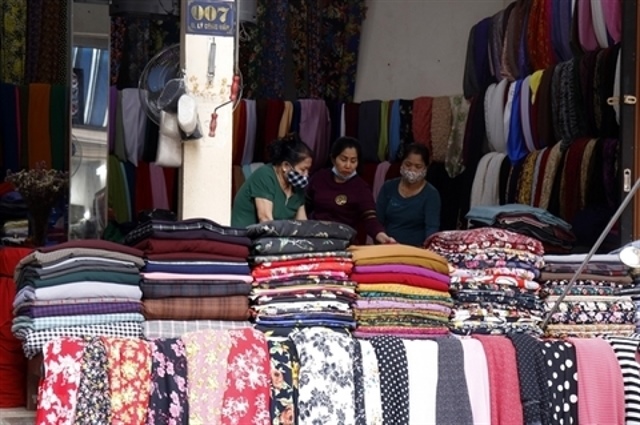NPLs - key to unlocking door to recovery
NPLs - key to unlocking door to recovery
The massive non-performing loan (NPL) problem remains an elephant in the room that the government must tackle if it is to get the economy back on track, writes Dr. Christian Kamm.

Vietnam is yet at another crossroad, as the country’s growth appears to be stifled by slow restructuring of the banking sector.
As the International Monetary Fund (IMF) last month lowered the growth outlook for Vietnam for 2013 and in 2014, confidence in the country’s ability to manage the banking sector’s massive NPL problem is waning.
The central bank has recently created a bad debt bank, the Vietnam Asset Management Corporation (VAMC) which will essentially buy real estate mortgages (eventually commercial loans also) at book value from the banks and a type of bonds will be exchanged for the loan which will be backed by the assets for the central bank.
Critics have said that the VAMC has too small a capitalisation (just $24 million) which might question its ability to expand its balance sheet to accommodate the extent of the NPL problem which could be over $20 billion. The of the capitalisation is somewhat irrelevant if the VAMC simply exchanges the loan for a bond. Other critics consider the VAMC is being created too late, citing the need for its creation as much as three years ago.
Regardless of the criticism, the VAMC might actually serve the purpose it was created for, if the government allows the balance sheet of the VAMC to grow with full recognition of the NPL problem. Certainly, the government leaders understand the challenges associated with restructuring the banking system and failure to curb the effect of the problem could result in capital flight from Vietnam by foreign investors.
From an investor’s standpoint, the resolution of the NPL problem is critical. Since real growth rates are highly dependent on both foreign capital inflows as well as credit growth by the banking system, not to mention investor and consumer confidence, the underpinning of the financial system being fundamentally sound is a cornerstone for investors in the stock market as well as real estate.
Foreign and local investors have had decades of experience with banking crises in developing countries. The Asian Crisis in 1997-1998 which occurred in “tiger economies” of Asia was similar. Each country had posted strong economic growth for almost a decade, resulting in underperforming loans in the banking system, and over-priced real estate markets and as foreign investors began to digest lower growth rates, devaluing currencies, capital outflows by foreigners caused greater economic hardship. In order to stabilise the currencies and the economies of the countries affected, the IMF made significant loans and took bold actions to demand reforms.
In some ways, though, the Asian Crisis is not similar to the banking problems in Vietnam. The Asian Crisis was a crisis so great as to require IMF assistance and with the possibility of being contagious to the whole world. Countries such as Thailand and Indonesia faced massive currency devaluations as a result of weak foreign exchange reserves. In Vietnam, it is questionable if the dramatic depreciation of the local currency would be required. It does not appear that the foreign exchange reserves are in danger of being depleted considerably to solve this problem.
There are similarities in the Asian Crisis to Vietnam. Possibly over-priced real estate and high growth rates over a decade promoted loose credit policies which resulted in a high amount of non-performing loans in the banking sector. The need for general corporate reform and “modernising” the corporate structure in the “tiger economies” is similar to what is needed in Vietnam. As the “tiger economies” created large, inter-related business groups (in Indonesia it was commonly called “crony capitalism”) which tended to stifle growth as lending was centered in these business groups, Vietnam struggles with similar problems related to underperforming state-owned enterprises.
Even though the government of Vietnam has set a goal of 12 per cent credit growth for 2013 and has committed to providing adequate liquidity to meet this goal, banks must be willing to lend. Therefore, from a monetary policy standpoint, the government has lowered interest rates and committed to providing liquidity but without the willingness of banks to actually lend monetary policy will remain ineffective. Deposit rate ceilings, another monetary policy tool, tends to confuse banks and market participants and often is utilised by a central bank to restrict lending by financial institutions.
In a way, the banking system problems in Vietnam are the “effect” not the “cause”. The “cause” relates closely to the challenges any developing country faces, the difficulty in managing fiscal and monetary policies in periods of high and low economic growth. Banking problems can result from “over-confidence” as well as “under-confidence” in the economy or even external factors such as world economic growth. It is the depth and breadth of the banking problems that should concern investors. Banking problems such as non-performing loans are a cost of doing business for a bank, anywhere and everywhere. Conceivably, the larger the NPL problem, the more likelihood the problem will not readily be resolved.
Still the major problem of all developing countries is a need to balance sustainable export growth with capital inflows and outflows. Experts believe the Asian Crisis was the “new” competitive pressure which countries such as Thailand, Malaysia, Indonesia and South Korea experienced as China emerged as a viable international trade partner for the developed world. Consider, at the present time, Vietnam faces the same challenge as international trading partners are developing every day – Cambodia, Laos, even sub-Sahara Africa. Such new entrants can tip the scales against Vietnam if the economy is not on solid and sustainable footing.
On a basic level, when a country is developing, it requires a great deal of capital inflow to promote infrastructure projects. Without the available infrastructure, foreign or domestic interests are not necessarily interested in investing in the country through direct investment such as factories, which, in turn provide employment and a higher economic growth. So as a country develops, the pressure to improve infrastructure through debt creation and foreign capital attraction is immense. Often, as in the case of Vietnam, uneven and unstable economic conditions result as inflows and outflows cause dislocations in the economy, making implementation of government policies to meet certain societal goals difficult and variable. It is no easy task for any government, with or without extensive resources, to accomplish this.
As the world has found in recent years, sound and stable financial systems are critical to the existence of the world as we know it. Financial systems are an essential part of the underpinning of all economies. It is a responsibility of each government to maintain a sustainable financial system. To instill and ensure investor confidence, governments must be proactive and formulate strategies best suited for the economic changes which occur.
Still navigating a developing country through such growth phases is a balancing act. Government leaders, in developing countries, are often forced to make unpopular but necessary choices to promote future sustainability for the country and progress in exchange for immediate growth. Certainly, the leaders of Vietnam recognise this need and are addressing the NPL problem in order to ensure sustainability and growth in the future. From an investor standpoint, this is welcome news.
vir

























